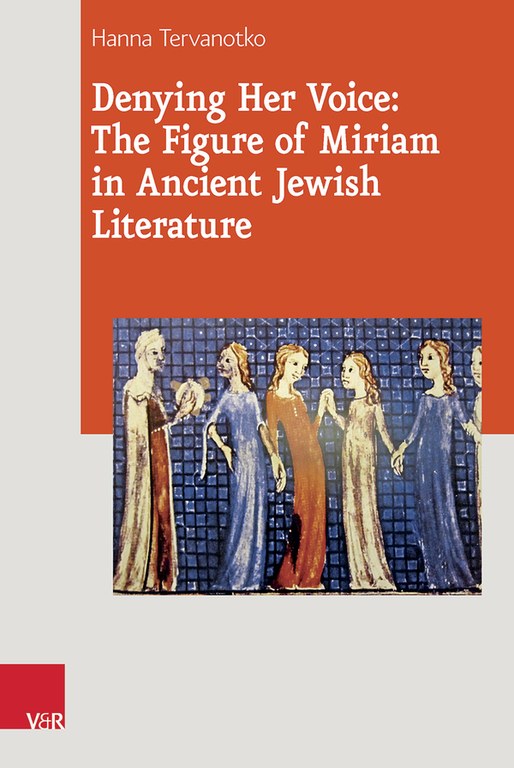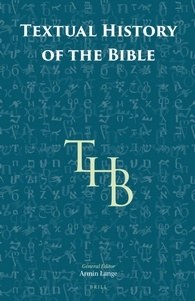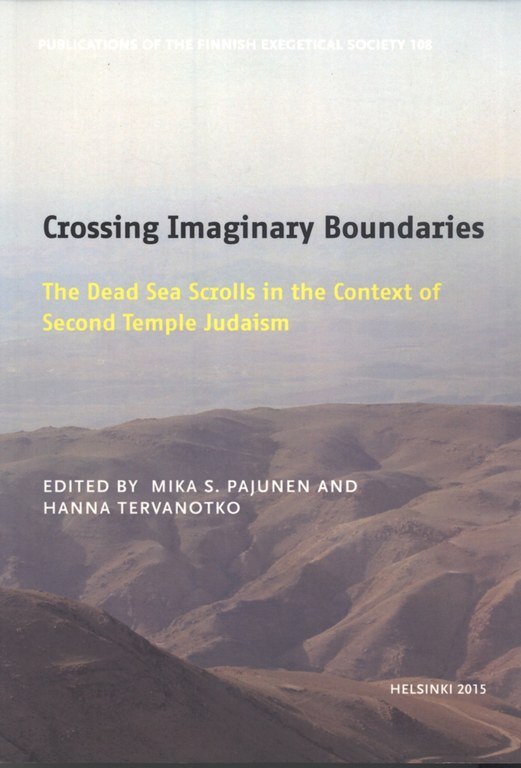Tervanotko Hanna, Associate Professor | Chair of Graduate Affairs
Hanna Tervanotko
Associate Professor | Chair of Graduate Affairs
Faculty
Department of Religious Studies
Area(s) of Interest:
Biography
Dr. Tervanotko joined McMaster's Department of Religious Studies in the Fall of 2017. Her interests include women in antiquity, Qumran, and Jewish interpretation of scripture.
Education
- University of Helsinki. Th.D. in Biblical Studies, 2013
- University of Vienna, Ph.D in Jewish Studies, 2013
- University of Helsinki. M.A. in Biblical Studies, 2003
Research
Monographs
- Denying Her Voice: The Figure of Miriam in Ancient Jewish Literature. Journal of Ancient Judaism Supplement Series 23. Göttingen: Vandenhoeck & Ruprecht, 2016.

Edited Volumes
- Textual History of the Bible. Volumes 3 A, 3B and 3C: A Companion to Textual Criticism. Ed. Armin Lange, Russell E. Fuller, Sidnie White Crawford and Hanna Tervanotko; Leiden: Brill, 2019, under contract.

- Crossing Imaginary Boundaries: The Dead Sea Scrolls in the Context of Second Temple Judaism. Ed. Mika S. Pajunen and Hanna Tervanotko; Publications of the Finnish Exegetical Society 108; Helsinki: Finnish Exegetical Society, 2015.

Edited Journals
- “Female Prophets.” Thematic issue published in Journal of Ancient Judaism 3/2015. Ed. Hanna Tervanotko, Maxine L. Grossman, Alex P. Jassen, and Armin Lange.
Journal Articles
- “Unreliability and Gender? Untrusted Female Prophets in Ancient Greek and Jewish Texts,” Journal of Ancient Judaism 3 (2015): 358-381.
- “Members of the Levite Family and Ideal Marriages in Aramaic Levi Document, Visions of Amram, and Jubilees,” Revue de Qumrân 106 (2015): 155-176.
- “Obey me like your mother” (L.A.B. 33:1) Deborah’s Leadership in Light of Liber Antiquitatum Biblicarum 33,” Journal for the Study in the Pseudepigrapha 24 (2015): 301–323.
- “The Significance of the Dead Sea Scrolls for Understanding the Development of Pentateuchal Rewritings,” [in Finnish]. With Jessi Orpana. Teologinen Aikakauskirja 3 (2013): 224-234.
- “Women and Qumran Movement: Did Women Belong to the Movement?” [in Finnish]. Teologinen Aikakauskirja 3 (2013): 279-282.
Essays
- “The Pseudepigrapha and Gender” in Studying the Pseudepigrapha: Fifty Years of the Pseudepigrapha Section at the SBL. Ed. Matthias Henze and Liv Ingeborg Lied; Atlanta: Society of Biblical Literature, 2018, (contract signed).
- “Disbelief in Prophecies: Cassandra and the Female Prophets of the Hebrew Bible” in ‘I Am No Prophet’ (Amos 7:14): Functions of Prophecy in Holy Books and Beyond. Ed. Armin Lange & Bennie H. Reynolds; Göttingen: Vandenhoeck & Ruprecht, (in press).
- “‘The princess did provide all things, as though I were her own’ (Exagoge 37-38): Reading Exodus 2 in Late Second Temple Era” in The Bible and Women: An Encyclopedia of Exegesis and Cultural History. Part 3: Writings from the Second Temple Period. Ed. Eileen Schuller & Maria-Theres Wacker; The Bible and Women; Atlanta: Society of Biblical Literature. Published also in German, Spanish, and Italian, (in press).
- “Miriam Daughter of Bithiah,” “Michal Daughter of David,” “Mikneiah,” “Miniamin,” “Meunim,” and “Molid” in Encyclopedia of Bible and its Reception 17. Ed. Juha Pakkala et al.; Berlin & Boston: Walter de Gruyter. Forthcoming 2017.
- “Magi and Magicians? A Comparative Study of Enchanters, Dream-Interpreters and Diviners in Ancient Jewish and Greek texts” [in Finnish] in Raamattu ja Magia. Ed. Kirsi Valkama, Hanne von Weissenberg & Nina Nikki; Publications of the Finnish Exegetical Society 110; Helsinki: Finnish Exegetical Society, 2016, 71-93.
- “4Q184 Lady Folly: A Shameless Woman” [in Finnish] in Kuolleenmeren kadonnut kansa. Ed. Raija Sollamo & Mika S. Pajunen; Helsinki: Gaudeamus, 2015, 364-365.
- “Gendered Beauty: Observations on Portraying Beautiful Men and Women in the Hebrew Bible” in So good, so beautiful: Brothers and sisters holding together - Wat goed is het, wat mooi! Broers en zussen sluiten zich aaneen. Ed. Peter Tomson & Jaap de Lange; Gorichem: Narratio, 2015, 41-52.
- “Visions, Otherworldly Journeys and Divine Beings: Figures of Levi and Amram as Communicators of Godly Will in the Dead Sea Scrolls” in Crossing Imaginary Boundaries: The Dead Sea Scrolls in the Context of Second Temple Judaism. Ed. Mika S. Pajunen & Hanna Tervanotko; Publications of the Finnish Exegetical Society 108; Helsinki: Finnish Exegetical Society, 2015, 210-238.
- “A Trilogy of Testaments: The Status of the Testament of Qahat versus Texts Attributed to Levi and Amram” in Old Testament Pseudepigrapha and the Scriptures. Ed. Eibert Tigchelaar; Bibliotheca ephemeridum theologicarum lovaniensium 270; Leuven: Peeters, 2014, 41-59.
- “Glaphyra Daughter of Archelaus of Cappadocia” and “Glaphyra Mother of Archelaus of Cappadocia” in Encyclopedia of Bible and its Reception 10. Ed. Dale C. Allison et al.; Berlin, Munich & Boston: Walter de Gruyter, 2014, 298.
- “Speaking in Dreams: The Figure of Miriam and Prophecy,” in Prophets Male and Female: Gender and Prophecy in the Hebrew Bible, the Eastern Mediterranean, and the ancient Near East. Ed. Corinne L. Carvalho and Jonathan Stökl. Ancient Israel and Its Literature 15; Atlanta: Society of Biblical Literature, 2013, 147-168.
- “You Shall See: Rebekah’s Farewell Address in 4Q364 II, 1-6” in The Hebrew Bible in Light of the Dead Sea Scrolls. Ed. Nóra Dávid, Armin Lange, Kristin De Troyer, and Shani Tzoref; Forschungen zur Religion und Literatur des Alten und Neuen Testaments 239; Göttingen: Vandenhoeck & Ruprecht, 2011, 413-426.
- “hrh – pregnancy,” and “ ’em – mother,” Theological Dictionary of the Qumran Manuscripts / Theologisches Wörterbuch zu den Qumrantexten. Band I. Ed. Heinz-Josef Fabry & Ulrich Dahmen; Stuttgart: Kohlhammer, 2011, 818-822.
- “Miriam Misbehaving? The Figure of Miriam in 4Q377 in Light of Ancient Jewish Literature” in Dead Sea Scrolls in Context. Ed. Armin Lange, Emanuel Tov, and Matthias Weigold; Vetus Testamentum Supplements 140/1; Leiden: Brill, 2010, 309-324.
- “Miriam’s Mistake: Numbers 12 Renarrated in Demetrius the Chronographer, 4Q377 (Apocryphal Pentateuch B), Legum Allegoriae and the Pentateuchal Targumim” in Embroidered Garments: Priests and Gender in Biblical Israel. Ed. Deborah W. Rooke; Hebrew Bible Monographs 25; Sheffield: Sheffield Phoenix Press, 2009, 131-150.
- “The Hope of the Enemy has Perished: The Figure of Miriam in the Dead Sea Scrolls” in From Qumran to Aleppo: A Discussion with Emanuel Tov about the Textual History of Jewish Scriptures in Honor of his 65th Birthday. Ed. József Zsengellér, Armin Lange, and Matthias Weigold; Forschungen zur Religion und Literatur des Alten und Neuen Testaments 230; Göttingen: Vandenhoeck & Ruprecht, 2009, 156-175.